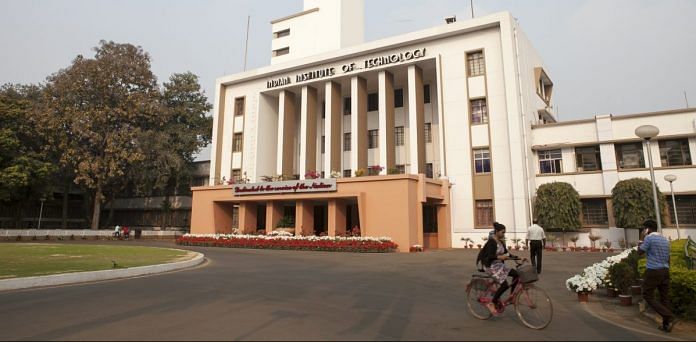779 additional seats have been created, mostly in the branches that are traditionally not pursued by women.
New Delhi: The IITs have not only added more seats for female students this year to improve the gender balance at the premier engineering institutes but also wants these young women to largely become mechanical and civil engineers — branches that are traditionally not pursued by them.
An analysis of the seat allocation by the IITs shows that one third of the newly added seats are concentrated in mechanical and civil branches.
Earlier, some IITs such as IIT-Guwahati had no seat at all for female candidates in the mechanical branch, while IIT-Kanpur had only two seats. Both these institutions now have a fair number of women-only seats in civil and mechanical branches.
A total of 779 additional seats have been created for women students across IITs this year.
Improving gender balance
The decision to add extra seats was taken last year on the basis of a report submitted to the HRD ministry, which says that about 3 lakh women join the engineering stream in India every year, of which only about 8 per cent join the IITs.
“There are barely 8 per cent female students in B.Tech courses while women form 48.5 per cent of Indian society. IIT B.Tech is not serving the nation to the fullest. We are not giving education to almost half of the best young Indians,” (sic) the report said.
Accordingly, IITs were asked to create more seats across branches to increase women’s intake from 8 to 14 per cent from this year. The idea is to eventually take the number to 20 per cent by 2020.
According to the report of the Joint Allocation Board (JAB), formed to look into the gender balance issue at IITs, 848 women were admitted to B.Tech courses in all IITs and there were 1,400 who qualified but did not join IITs due to various reasons, including geographical mobility or preferences for specific branches.
Also, there were around 2,400 female students who qualified the JEE-Advanced but with lower marks. The additional seats will cater to all these women.
“Branches such as mechanical traditionally do not get many women. That is why more seats were added to such branches to give an additional advantage to women who want to be a part of the IITs,” Timothy Gonsalwes, director of IIT-Mandi in Himachal Pradesh who chaired the JAB sub-committee, told ThePrint.
Job prospects
Gonsalves also pointed out that at present, lines have largely been blurred between various branches when it comes to jobs.
“A female student who takes up mechanical engineering has a fair chance of getting a good placement in an automobile company since most of the work is automated these days,” he added.
This seat matrix, according to sources, had made the government worried initially when the number of candidates selected to JEE-Advanced was at 18,000 — a seven-year low. IITs were then asked to declare another cut-off list so that those scoring lesser marks got the extra seats. Later, the number of candidates was taken to around 32,000.
What will happen to the extra seats created for women if they are few takers will be clear once the counselling starts from 27 June.
According to the data shared by MHRD, there are 17.74 per cent female students across IITs as of 2017. This figure includes women at the undergraduate, postgraduate and PhD levels.




Stop spreading fake news, the statement “Earlier, some IITs such as IIT-Guwahati had no seat at all for female candidates in the mechanical branch, while IIT-Kanpur had only two seats.” is a complete lie. All the seats were open to students of all genders, so it is utterly wrong to say there were no seats for female candidates.
The State of Gujarat took the initiative to provide more opportunities for girls in engineering degree and diploma programmes. This was after National Policy on Education recommendations. Gujarat State was the only state in the country to conceive and implement.
It was observed that relatively small number of girls were getting admissions. The State made an enabling provision that at least 15% girls should get admission in each programme and each polytechnic and college. In order not to curtail admissions of boys on merit, there was a provision for supernumerary seats. That is, if girls got say 7 % Seats on merit, additional 8% supernumerary seats would be provided. This was highly appreciated by girls and society . Eventually by default this was abolished in 2001.